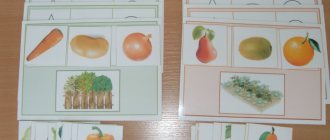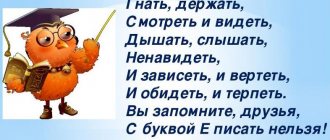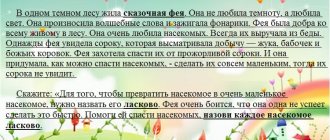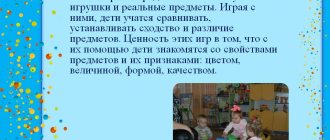Beautiful speech with movement
From childhood, most parents teach their children to follow certain rules of good manners that are directly related to speech. First of all, from a very young age it is forbidden to talk at the table with your mouth full, especially since this is quite dangerous due to the possibility of choking on food. There is also a ban on the use of various common “street” word forms in speech, which can indicate the lack of education of each person. Getting rid of talk is one of the most important tasks, according to many parents. All these rules of good manners were invented not out of a desire to limit human development, but because a well-mannered person is able to have a positive impact on society and this very society will certainly accept him. In addition to the generally accepted rules of good manners, there are also quite unambiguous ones that limit speech while moving, because talking while running cannot bring any benefit not from communication, and sports activities will be disrupted.
No person running and talking at the same time is able to concentrate either on the exercise or on the topic of conversation. Speech and movement are incompatible.
Each person talks while driving, some on a mobile phone, and some with his companion. But such communication cannot be called constructive, due to the fact that all important decisions are made not in the course of fleeting words while driving, but in the appropriate environment in offices or at the workplace.
Breath control
Yes, there are professions in which it is simply impossible to do without speech in movement, and this is primarily due to the need to inform colleagues or the public while performing certain actions related to movement. For such people, the impact of words is very important. In these cases, it is necessary to develop the respiratory functions of your body. After all, speech and movement require rhythm, and this can only be achieved with a developed respiratory system, which is able to provide oxygen to the muscles that require energy during movement, and at the same time allows you to pronounce deliberate words at the same rhythm.
Anyone can achieve a monotonous rhythm of conversation while performing a motor function, but they must be in fairly good physical shape and be able to control their breathing.
Indeed, when the rhythm of the respiratory system fails, both the rhythm of speech and the work of internal organs, which are directly related to the volume of oxygen entering the blood, are disrupted.
Indeed, almost every person notices how difficult it is to maintain the rhythm of speech when walking or running quickly, and there are people who find it difficult to speak even during a short walk.
RELATIONSHIP OF SPEECH AND MOVEMENT
It is known: the higher the child’s motor activity, the more intensively his speech develops.
On the other hand, the formation of movements occurs with the participation of speech. It is one of the main elements in motor-spatial exercises. The rhythm of speech, especially poetry, sayings, and proverbs, contributes to the development of coordination, general and fine voluntary motor skills. Movements become smoother and more expressive. The correct tempo of speech and breathing rhythm are developed, speech hearing and memory are developed. The poetic form always attracts children with its liveliness and emotionality, setting children up for play without special settings. Gross and fine motor skills should be developed in parallel, offering the child exercises appropriate to his age and abilities. Using the example of simple exercises for the development of general motor skills - movements of the arms, legs, and torso - you can teach him to listen and remember tasks, and then perform them. The child does not speak or speaks poorly. Each family has a different attitude towards this phenomenon. Some are worried that by the age of one year the baby speaks only two or three words. Others are calm, despite the fact that a three-year-old child cannot form the simplest phrase and knows only a small number of everyday words. Such parents believe that over time he will catch up with his peers and speak on his own. And they are very wrong. Most often, the delay has a serious impact on overall development, does not allow full communication and play with peers, makes it difficult to understand the world around us, and aggravates the emotional and mental state of the child. However, if you get help in time and constantly use all methods of developing speech activation, serious problems can be successfully solved. In a normally developing baby, the first words appear at 8-9 months. If after 1 year and 2 months - 1 year and 3 months the child does not utter a single word, you need to sound the alarm. After one and a half years, two-word sentences normally appear: “Mom, give me; Dad, beep." The number of words by the end of the second year of life ranges from 100 to 300. By the end of the third, vocabulary increases 3-4 times. Verbose sentences appear. The child is able to recite a short fairy tale almost by heart, read to him several times. At three years old he can pronounce most sounds correctly. The higher the motor activity of children, the better their speech develops. The relationship between general and speech motor skills has been studied and confirmed by research by many leading scientists. Such as I.P. Pavlov, A.A. Leontiev, A.R. Luria. When a child masters motor skills and abilities, coordination of movements develops. The formation of movements occurs with the participation of speech. Precise, dynamic execution of exercises for the legs, torso, arms, and head prepares for the improvement of the movements of articular organs: lips, tongue, lower jaw, and so on. The development of fine movements of the fingers is especially closely related to the development of speech. Why does a person who cannot find the right word to explain often help himself with gestures? And vice versa. A child, writing or drawing with concentration, helps himself by involuntarily sticking out his tongue. The well-known researcher of children's speech M.M. Koltsova writes: “The movements of the fingers, historically, in the course of human development, turned out to be closely related to speech function. The first form of communication of primitive people was gestures: the role of the hand was especially great. The development of hand and speech functions in humans proceeded in parallel. The development of a child’s speech is approximately the same. First, subtle movements of the fingers develop, then articulation of syllables appears; all subsequent improvement of speech reactions is directly dependent on the degree of training of finger movements.” Thus, “there is every reason to consider the hand as an organ of speech - the same as the articulatory apparatus. From this point of view, the projection of the hand is another speech area of the brain.” The ability to freely and naturally use hand movements is developed through special exercises. This is the initial stage preceding classes on the development of fine motor skills. Through simple exercises that are easy to understand and perform, children learn to subtly perform voluntary movements at the command of an adult. At the same time, care must be taken that they are performed without undue tension and at the same time clearly and expressively. By the age of three, the baby is ready for games and activities that purposefully develop attention, visual memory, spatial orientation, and thinking. Games help stimulate the imagination, develop creativity and further improve fine finger movements - fine motor skills. FINE MOTOR SKILLS – SPEECH – THINKING develop equilaterally and intensively. To make classes more attractive and intense, the duration should not exceed 10-15 minutes, and the child should receive items for them only for the duration of the game. Take care to remove unnecessary things from your baby's sight. They can be distracting. To develop motor skills and abilities, you can use all kinds of games: with imaginary objects, a ball, cubes, a jump rope (rope), small objects, balls, rings, laces, fingers, “Buttons”, “Matches and sticks”, everyday scenes, poems with movements.
The connection between movement and speech
The connection between movement and speech is a well-known fact that is beyond doubt. Moreover, speech, in its essence, is also a movement of the muscles of the organs of articulation and vocal cords. That is why the task of learning to coordinate speech with movement is not so difficult and comes down to developing stable skills in the coordinated work of different muscle groups.
There are many ways to achieve clear coordination of speech and movement. And the most famous and effective of them is the game. Games are the predominant method of developing the ability to coordinate speech with movement for preschoolers and children of primary school age. We all probably remember children's games in which we made specified movements and at the same time recited simple rhymes in chorus (“Bear the bear in the forest,” “Geese-geese, ha-ha-ha,” etc.). Such games, it turns out, are not only exciting fun for kids, but also help them gain basic skills in coordinating speech and movement. Games are quite often used for learning. They are liberating; with their help it is easy to explain what cannot be expressed in words. Thus, the use of games for teaching acting is widespread.
Various exercises are also used to form and automate the relevant skills. For example, jumping rope at different paces while simultaneously reciting a rhyme or tongue twister. This exercise allows you to practice speech breathing in a state of physical activity. There are exercises aimed at the ability to coordinate the tempo of speech and movement, voice strength and other speech-motor aspects.
Lesson on the formation of lexical and grammatical aspects of speech in the preparatory group for children with speech disorders Topic: “Pets”
Correctional educational goals : Generalization and systematization of knowledge about domestic animals, their appearance and lifestyle. Clarification, activation and updating of the dictionary on the topic: “Domestic animals” (animal, cub, cow, bull, calf, horse, horse, foal, ram, ewe, lamb, goat, goat, kid, pig, wild boar, piglet, rabbit, rabbit, baby rabbit, stable, cost, feeding trough, hay, swill) Improving the grammatical structure of speech (formation and use of possessive adjectives) Correctional and developmental goals : Develop articulatory motor skills, facial muscles, fine motor skills. Develop visual, speech, auditory, creative imagination. Improving the grammatical structure of speech. Educational goals : Developing skills of cooperation, independence, initiative, activity, love and respect for nature. Equipment : Easel, colored pencils, landscape sheet, poster with the image of domestic animals, object pictures depicting domestic animals and their cubs.
Progress of the lesson 1. Organizational moment. - The one who repeats after me the chain of words will sit down: Cat-dog - cow-sheep; Calf - piglet-lamb-puppy; Horse-pig-ram-ox; Foal-kitten-kid-rabbit Educator: Hello, guys! This morning a white-sided magpie flew into my window and brought a letter from my grandparents on its tail. Let's read it! (Takes out a letter and reads: Hello, dear girls and boys. We have a problem - all the animals from our yard have fled. Please help us find them. And to find them, you need to solve riddles.) 2. Guessing riddles . (As you guess, images of domestic animals are hung on the board) Stigma like a cake, Legs with hooves, Thick abdomen, Tail like shavings. (Pig.) He is horned and bearded, Looks sternly at the guys. If someone is being naughty - Gore, gore, gore! (Goat.) The stove is walking, covered in rings. (Sheep) Who exchanges milk for hay? (Cow.) Quick as an arrow, Strong as an ox. In the field - a barge hauler, In battle - an eagle. (Horse.) He caresses toward “his own” people, and swears at “strangers.” In his own little house he sits on the padlock. (Dog.) Emerald eyes, Downy fur coat, Dear songs, Iron claws. (Cat.) Grazes in the meadow, Slowly nibbles the grass, But always reacts to a red rag! (Bull)
I am calm and stubborn, I am the leader in the herd for now. With soft curly fur, I wear horns with a curl. (Ram). Eating carrots, long-eared. If you want, you can take it in your arms. There is a wooden house in a cage. Who lives in it? White Rabbit)
Educator : - Well done guys, all the animals were returned back to the yard. Grandparents are happy with your work. Let's remember which animals we helped bring back? (Pig, goat, sheep, ram, cow, horse, dog, cat, rabbit.) - How can you call all these animals in one word? (Domestic) - Why? (Because they live next to the person who takes care of them...) Educator : Pets live next to the person and are of great benefit. Educator : What does the cow give us? Children : milk, kefir, butter, sour cream, cottage cheese, fermented baked milk. Educator: What does the goat give us? Children : milk, wool. Educator : What does the sheep give us? Children : wool from which thread is spun. Threads are used to knit socks, mittens, sweaters and make woolen fabrics. Educator: How do horses help people? Children : transport goods. Educator: What is the dog doing? Children: guards the house, Educator: What is the cat doing? Children: catches mice. Educator: A person feeds and cares for animals, builds a home for them. 4. Outdoor game: “Horses” (Coordination of speech with movement, development of general motor skills) At the suggestion of the teacher, children go to the carpet and stand in a circle and do familiar exercises. Horses walk in a crowd in the meadow. Walk in a circle with your knees raised high. I can list all the horses: For each name of the horse, bend one finger on both hands. Black as coal, white as snow, Red as a flame is the most beautiful of all. Gray, covered in apples, with a gray mane. The horse is chocolate, very young. Horses graze by the river in a crowd. Walk in a circle again with the knee raised high. Let's count them again with you. Black as coal, white as snow, fingers bend again. Red-haired as a flame is the most beautiful of all. Gray, covered in apples, with a gray mane. The horse is chocolate, very young. 5. Game “Who lives where? » On the magnetic board there are images of the houses of various animals, pictures with images of animals. We select a house for each animal. Children take turns going to the board, selecting a house for the animal, placing it in front of the animal and saying: - The cow lives in the barn. -The dog lives in a booth. -The cat lives in the house. -Sheep, goats and rams live in a barn. -The horse lives in a stable. — The pig lives in a pigsty. — The rabbit lives in a rabbitry. 6. Game “Gather a Family” Educator : All the young animals of our animals are mixed up in the yard, can we help return the young ones to their mothers and fathers? (Yes.) Place the animals of the same family next to each other and tell who is standing next to whom. There is a dog and a puppy next to the dog. Next to the ram are a sheep and a lamb. Next to the bull stands a cow and a calf. Next to the boar there is a pig and a piglet. Next to the horse stands a horse and a foal. Next to the goat stands a goat and a baby goat. There is a cat and a kitten next to the cat. Next to the rabbit stands a female rabbit and a baby rabbit
(You can repeat it - call it a chorus.) Educator : Well done! 7. Finger gymnastics: “We help with the housework.” The cow and the goat must be milked (perform movements with their fists from top to bottom, sometimes clenching and then unclenching their fists, as when milking) S-S-S-S And feed the dog. Gnaw, Bug, bone (they bring their fists to their mouth, hold them on both sides of the mouth, click their teeth, imitating how a dog chews a bone). Give the cat Murka milk to drink. Lak it, lap it, don’t spill it (they bring their cupped palms to their mouth and, bending their head over it, make several movements with their tongue). Shearing the wool from the sheep (bring the index and middle fingers on the right hand together and apart, imitating the movements of scissors). Chick-chick-chick-chick. Harness the horse, set off on the road But-No-No... let's go (sit on a chair straight, straighten your back, hold imaginary reins in your hands, shake them and click your tongue) The horse is carrying a load in a hurry. Hurry up, hurry up (they click at an accelerated pace), And now slow down (they click at a slow pace). Whoa, we've arrived.
8. Game “Find Mom” . (Development of visual attention and perception, fine motor skills. Prevention of impaired written speech)
The teacher offers to look at the pictures.
Educator : What is the name of the mother of the baby puppy?
Children : Dog.
Educator : Find the dog in the picture, trace it along the outline with a simple pencil, and then color it. Educator : Well done, you coped with this task. 9. Summary of the lesson. – Children’s work is assessed; – What animals did we meet today? (Pets.) -Why were they called “pets”? -What domestic animals do you know? -What benefits do they bring to humans?
Educator : Guys, we worked hard today and as a reward for our efforts, grandparents prepared a surprise for us.






